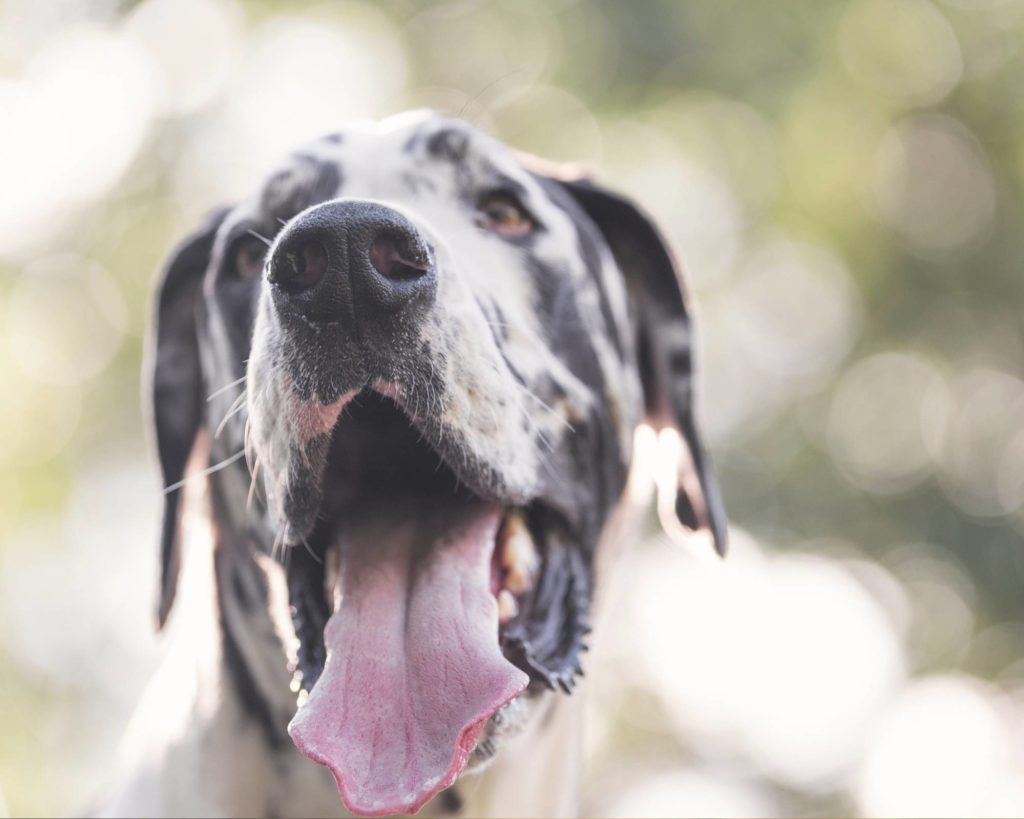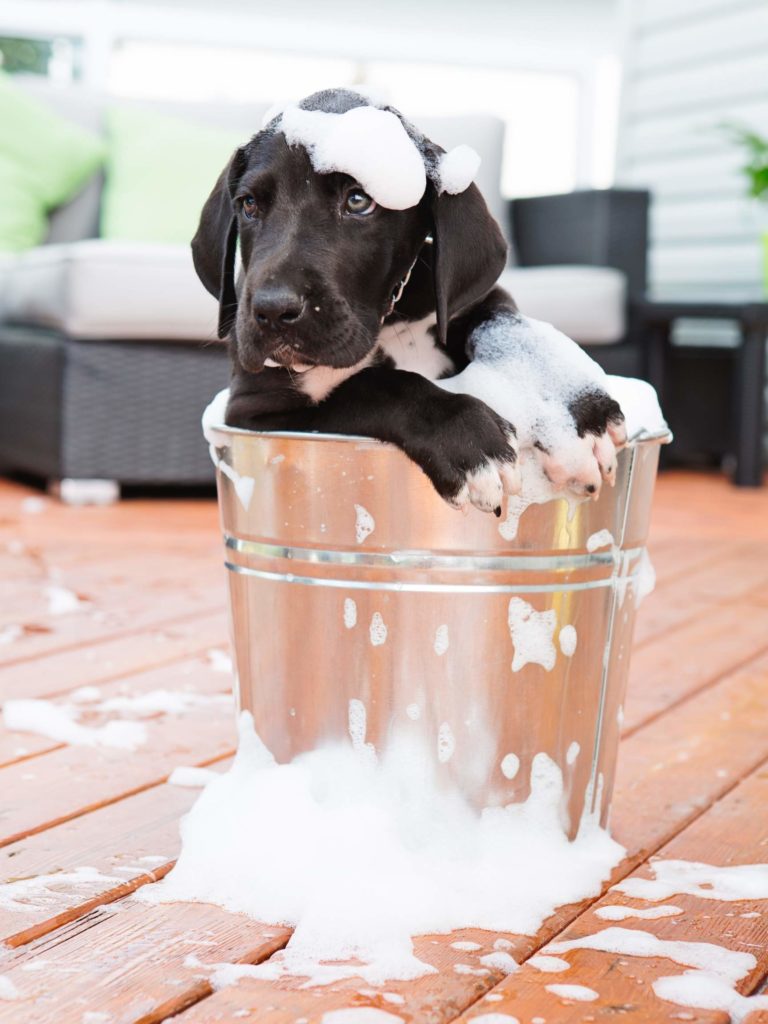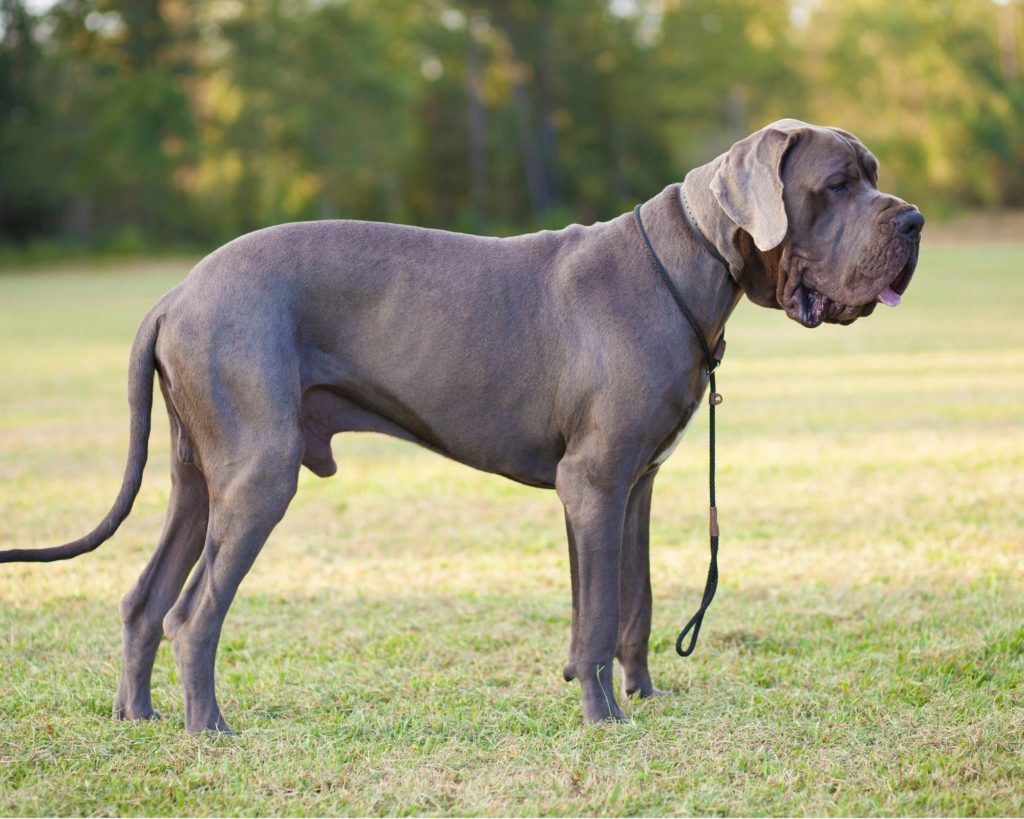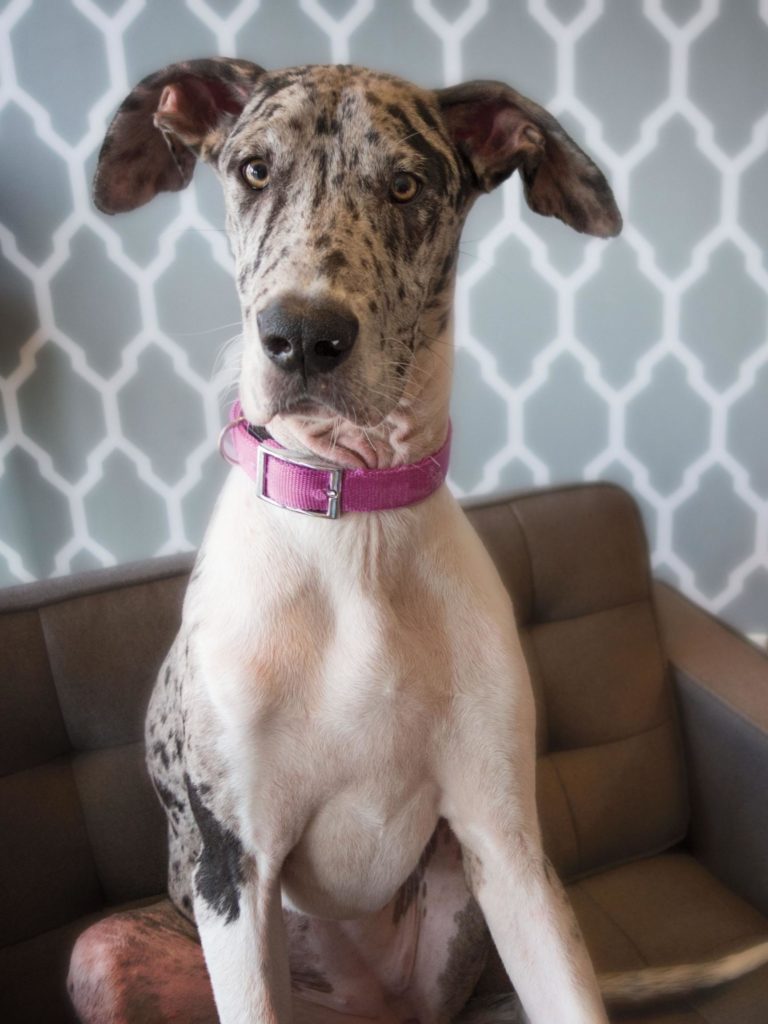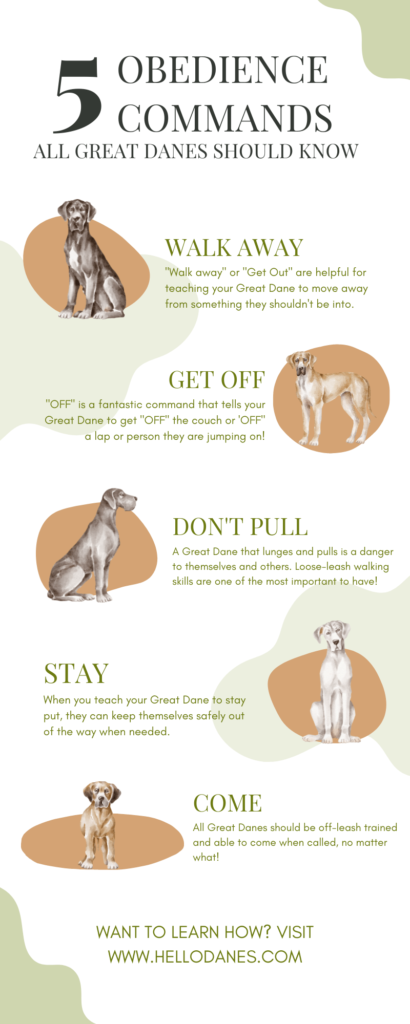Owning a giant breed dog comes with the joy of companionship and the responsibility of proper training. Training big dogs with effective, humane, and safe methods is crucial for managing their size and strength. Nobody likes being yanked around on the sidewalk or having a big dog bolt out of the door!
In this guide, we’ll explore positive reinforcement methods with a touch of balanced techniques, emphasizing key commands tailored to large dogs.
- The best training method for big dogs
- 5 commands all large breed dogs should know
- Training methods to avoid when working with dogs
- Information about positive reinforcement and balanced training
- Prong collars and E-Collars, oh-my!

Training Big Dogs with Positive Reinforcement Dog Training
Positive reinforcement is a cornerstone for training big dogs like Great Danes. Some people may think it means being permissive and easy on their big dog, but nothing could be farther from the truth.
All creatures are motivated by the desire to receive good things in life! Humans will do a good job at work to receive a bonus. Kids will complete chores to receive money or treats. If you’ve ever rewarded yourself with a glass of wine after a long day, you’ve given yourself positive reinforcement.
R+ (positive reinforcement) dog training involves rewarding desired behaviors with treats, praise, or playtime.
All good dog training starts with rewards!
When training your big dog, we recommend keeping high-value treats in your pocket or a suitable treat pouch (like this one on Amazon, my personal favorite).
You can reward your dog with tiny tidbits for the smallest good things they do! Reward your dog for:
- Looking at you
- Responding to their name
- Sitting politely
- Touching their nose to the palm of your hand
- Staying on command, even if for only a moment at first
What other things can you actively reward your dog for doing right in your day-to-day lives?
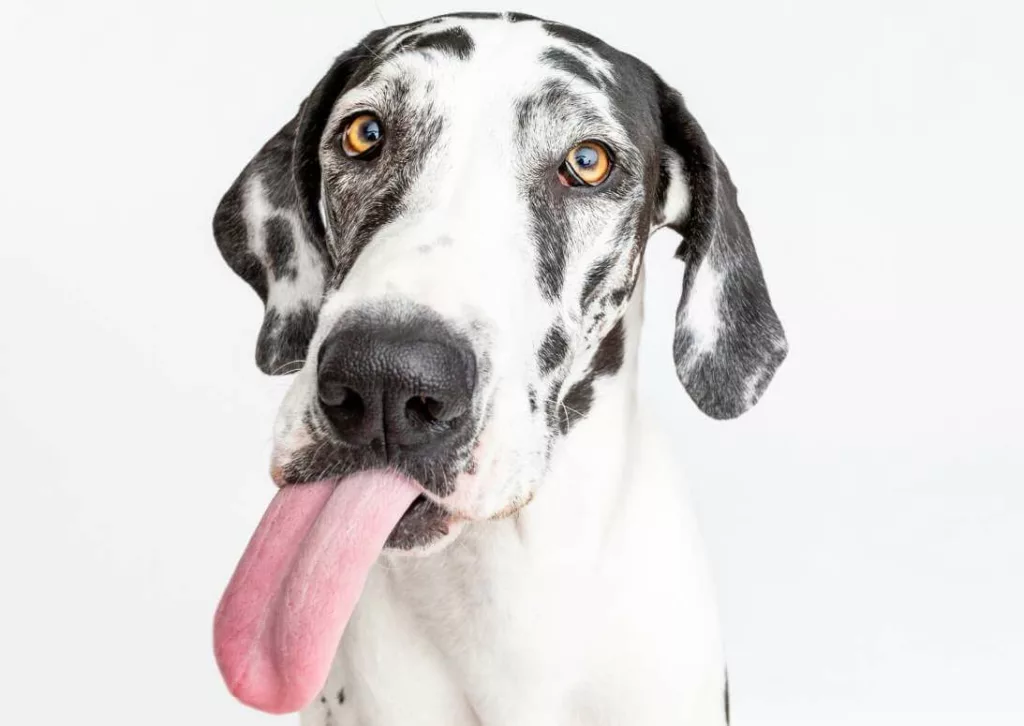
Key Obedience Commands for Big Dogs
All big dogs should have a goal of obtaining at least Canine Good Citizen level basic obedience. This is for their safety and yours!
The Canine Good Citizen test requires that dogs can sit, down, stay, come when called, ignore distractions (including people and dogs), walk politely on a leash, and accept handling (grooming, veterinary care, etc.).
Some dogs will be unable to complete every step of the CGC test due to limitations associated with their temperament; this is ok! The goal is to attempt to pass, whenever possible.
Read more about the Canine Good Citizen test HERE.
Below I will outline 5 key obedience commands all big dogs should know:
Recall & Coming When Called
A reliable recall is paramount for the safety of giant breed dogs. Begin in a secure, enclosed space with minimal distractions. Use a cheerful tone and offer high-value treats when your dog returns to you promptly after hearing the recall command. Gradually increase the distance and add distractions as your dog becomes more proficient. Read more about teaching a reliable recall HERE.
Gentle Leash Manners
Teaching gentle leash manners is crucial given the strength of giant breeds. Use positive reinforcement to reward your dog for walking calmly beside you. Whenever your dog maintains a loose leash, provide treats and praise. If your dog pulls, stop walking and wait for them to return to your side before resuming the walk, reinforcing the idea that pulling doesn’t lead to progress. We recommend starting in a low-distraction area and building on this skill. For more information about leash training giant dogs, read HERE.
Down-Stay on Command
The down-stay command is particularly useful for large dogs when you need them to remain calm and controlled. Start with short durations and gradually increase the time as your dog becomes more comfortable. Use treats to reward your dog for maintaining the down-stay position. This command is especially beneficial in various situations, such as when guests arrive or during vet visits.
Leave it Command
Teaching a giant breed to ‘leave it’ is essential for their safety, preventing them from picking up harmful objects or engaging in undesirable behaviors. Begin with a treat in your closed hand and say “Leave it.” When your dog refrains from attempting to take the treat, reward them with a different treat from your other hand. Gradually progress to using items on the ground, reinforcing the ‘leave it’ command.
Place Command
The ‘place’ command is useful for directing your giant dog to a designated area. Start with a specific mat or bed, using treats and praise when they follow the command to go to that place. This command is beneficial in various situations, including when you have guests or during meals. Reinforce the positive association by consistently rewarding compliance.
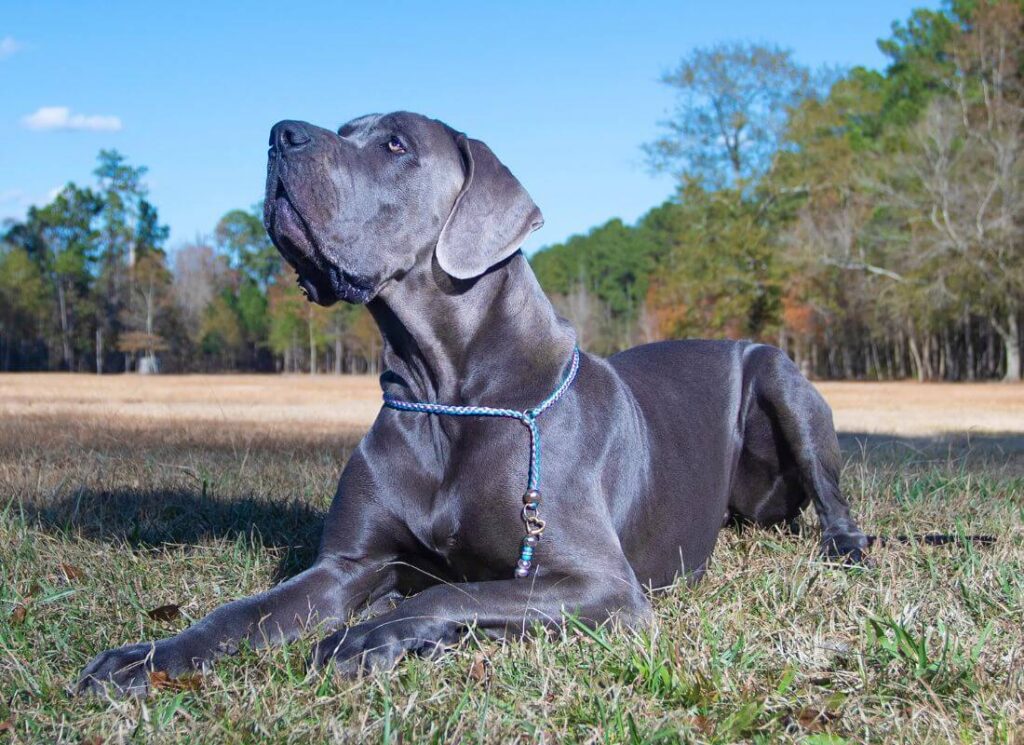
Balanced Dog Training Techniques for Big Dogs
While positive reinforcement is key, balanced techniques can be useful in specific situations. Appropriate corrections, prong collars, and modern e-collars can be effective tools when used correctly and under professional guidance.
These tools should complement, not replace, positive reinforcement and should never be used without diligent research and guidance.
Prong Collars
Prong collars can be effective and gentle tools for training giant breed dogs. Unlike their misleading appearance, prong collars are designed to apply gentle yet firm pressure around the neck. The prongs are rounded and blunt, ensuring they do not cause harm or discomfort when used correctly.
These collars are not meant to choke but rather to provide a clear communication channel between you and your dog. It’s essential to consult with a knowledgeable trainer to learn the proper way to fit and use a prong collar, ensuring it remains a safe and humane option for reinforcing commands and managing your giant breed dog’s behavior. Always prioritize positive reinforcement as the foundation of your training approach, using the prong collar as a supplementary tool for specific situations, such as leash manners, with care and caution.
We believe that a properly used prong collar is MUCH safer and more humane than a Gentle Leader or a No-Pull harness!
Modern E-Collars
In contemporary dog training, modern stimulation e-collars have emerged as effective tools when used responsibly and ethically. These collars provide a mild and adjustable level of stimulation, often described as a gentle tapping sensation, allowing for precise communication with your giant breed dog.
When used correctly, these e-collars can reinforce commands from a distance, making them particularly useful for recall and off-leash training. The key lies in setting the stimulation level at an appropriate intensity, which is more akin to a subtle reminder rather than a harsh correction. This ensures that the training process remains humane and stress-free for your dog.
We recommend that you read our e-collar articles and seek guidance from a professional to understand the correct usage of e-collars.
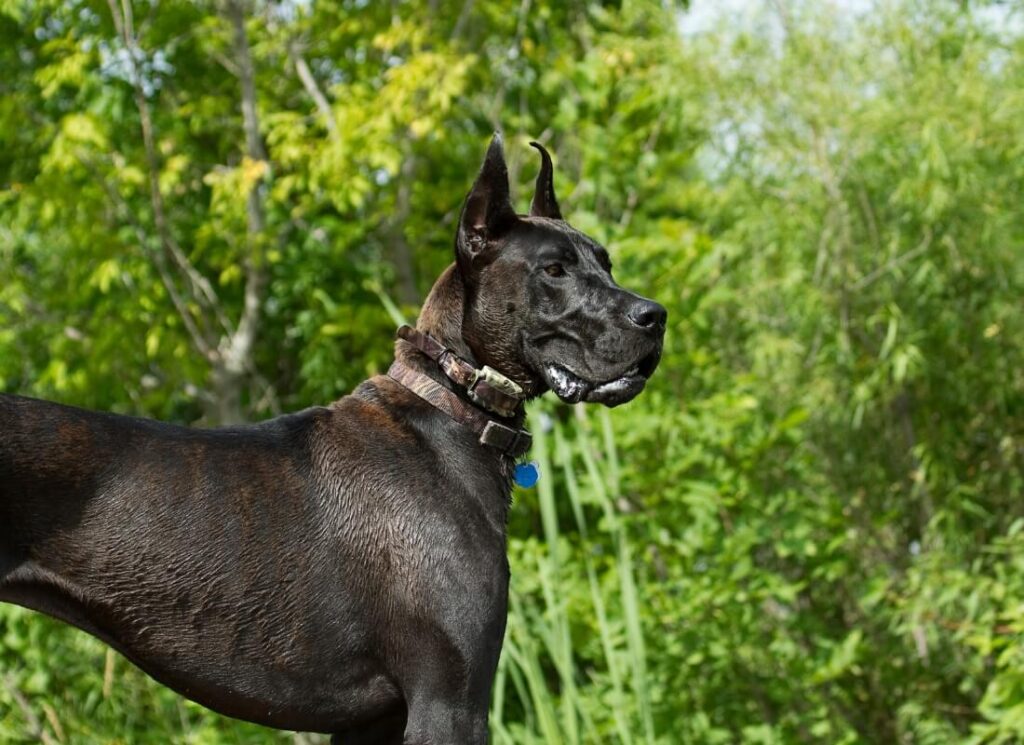
The Pitfalls of Outdated Dominance and Alpha Dog Training
Previously, dominance and alpha training were popular, but research has shown that these methods can lead to fear and aggression in dogs. Dogs are NOT wolves and they are not always trying to assume the position of pack leader!
Positive reinforcement builds trust and cooperation, fostering a healthier relationship. Avoid outdated dominance-based techniques that may harm your dog’s mental well-being.
Some examples of dominance alpha training methods that you should avoid include:
- Intimidating the dog into submission by using a forceful or forward posture
- Kicking, pinching, or jabbing the dog
- Saying “PSSSHHTTTT“
- Rolling the dog onto its back and holding it down (“alpha roll”)
- Biting the dog’s ear
- Spitting in or stealing the dog’s food
- Eating first, walking through doors first (absolute nonsense)
- Peeing on the same spot the dog just peed
- Throwing bags of chains at the dog to correct them
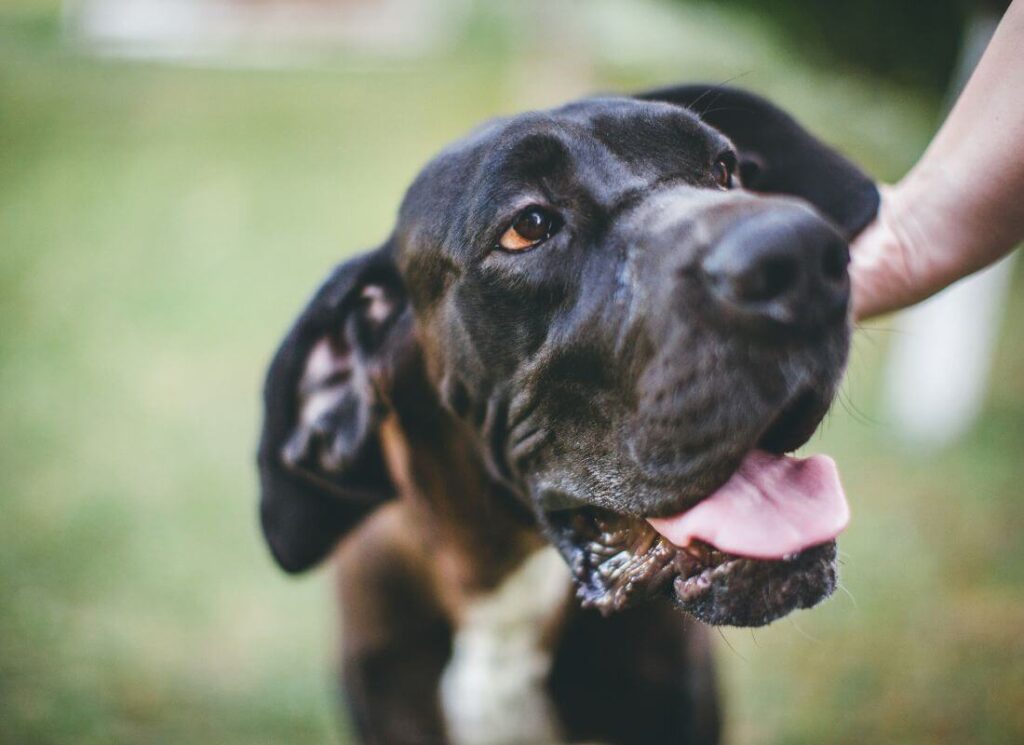
Socialization and Finding a Dog Trainer
Socialization is vital for big dogs to ensure they are well-behaved in various situations. Expose them to different environments, people, and animals from a young age. Additionally, finding a qualified trainer experienced with giant breeds is essential. Look for positive reinforcement-based trainers who understand the unique needs of large dogs.
Training your Great Dane requires patience, consistency, and the right techniques. Embrace positive reinforcement while incorporating balanced methods for effective obedience. Remember, building a strong bond through trust and cooperation is key to a harmonious relationship with your giant furry friend.


